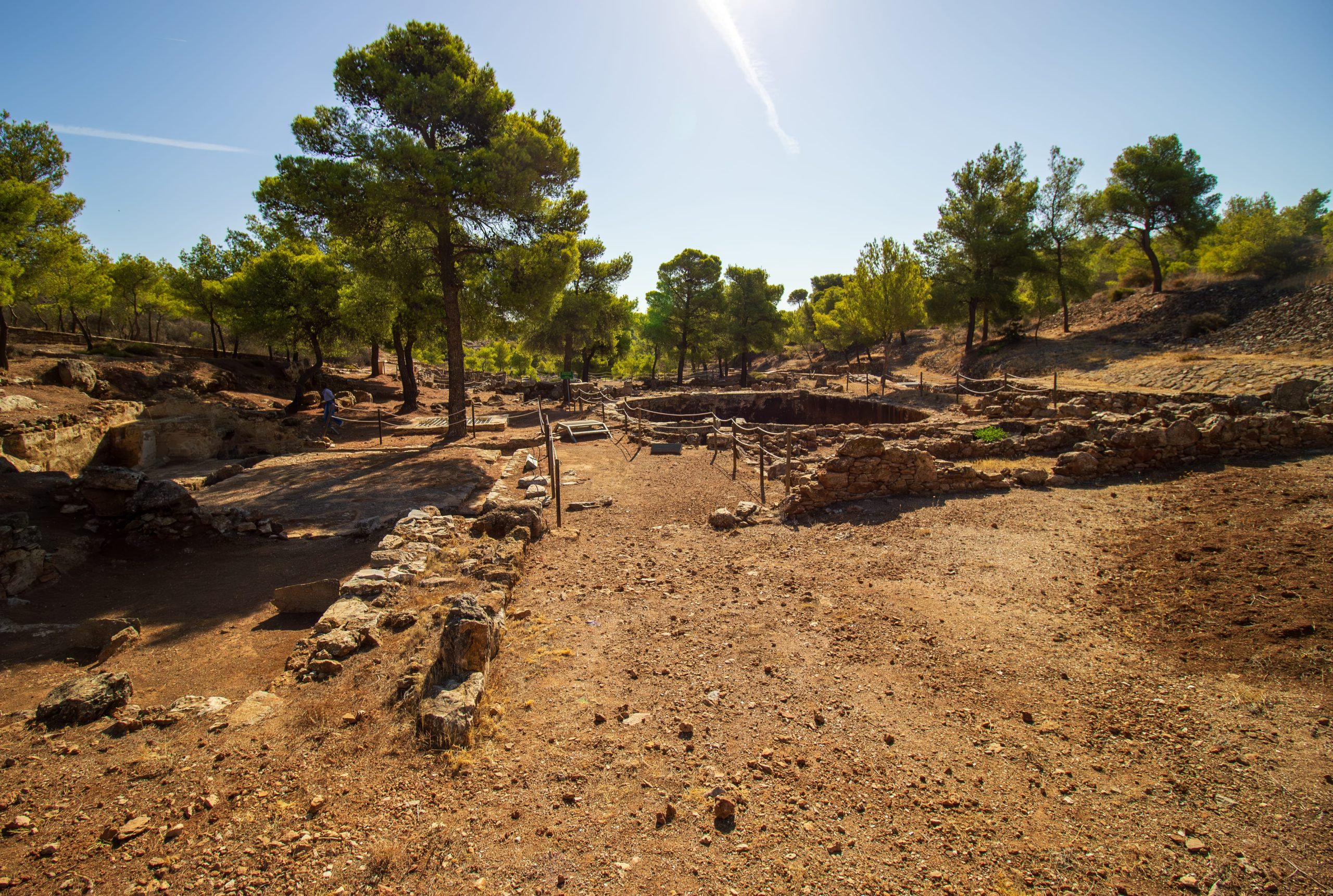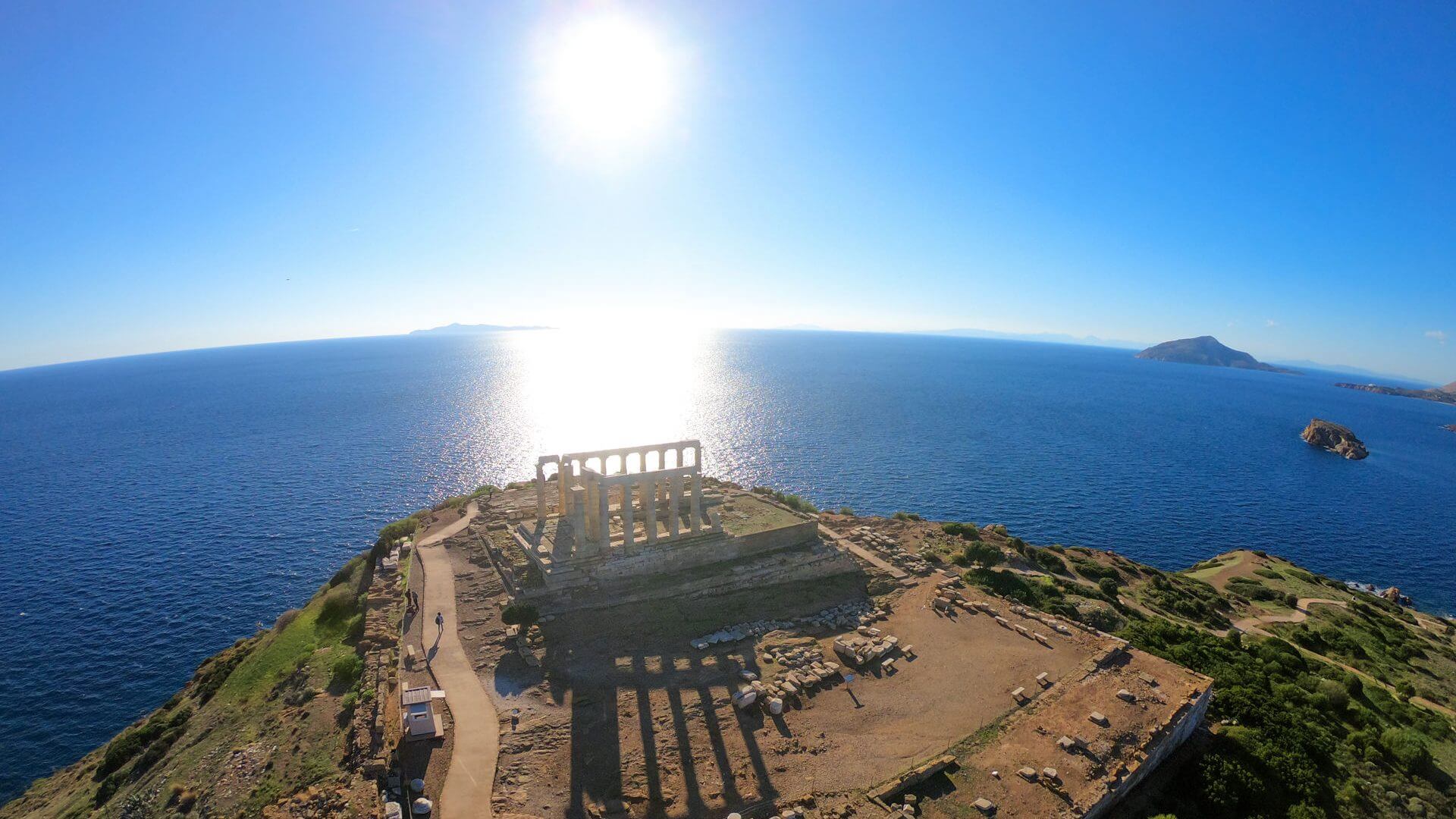Ancient Mining Straits of Thorikos
Ancient Mining Straits of Thorikos
At the foothills of the Mycenaean Acropolis of Thorikos, which supervises the natural harbor of Lavrion, a complex network of arcades, wells and rooms was discovered. Approximately 5 kilometers of underground conduits dug into the marble and slates of Attica were explored and scrutinized. The arcades are forming labyrinths of complex mining works whose height often does not exceed 30 cm. So far, it is the most extensive underground network that has been explored in this part of the Aegean world. The scientists also used a drone in order to locate facilities and remains on the surface of the ground, which are related to the mining. It is the first time such a complex mining infrastructure has been studied.
The morphology and organization of the underground mining infrastructure allow the distinction of several phases of activity. The archaeological data observed and collected during the final phase of the 2015 excavation period (ceramic and stone hammers made from sedimentary volcanic rock) show that the dating of the mining activity could be dated to the Late Neolithic/Early Helladic: about 3,200 B.C. If the future research confirms the original dating, then it will radically change the chronological framework of ore mining in Attica and the Aegean world in general. The Classic phase is clearly the most notable. It is found everywhere and is interesting for the regularity of the sectors of the segmented arcades which cover the whole area.
The activities of this period are documented by pottery and lamp sherds as well as a wall engraving and a neat inscription. The characteristics of these particularly well-organized mining works are the conduits that were made with sharp tools, square in shape, by chipping away the rock in successive stages. The continuation of the works at the end of the Classical period (4th century B.C.) is dated thanks to the traces of tools in the arcades and pottery sherds. The wells discovered within this network connect two main levels of mineralization and therefore mining. These are excellent geometric architectures, executed with millimeter precision, the possibility of their realization remains a subject of further study. Today these shafts are accessible only with suitable speleological equipment. Some of these galleries have remained intact over the past 5,000 years. Others, now inaccessible, are full of material from successive phases of mining. The progress of research in these galleries remains difficult for the experienced archaeologists, who carry high-tech equipment, in a stifling atmosphere with temperatures of up to 21ºC.
The mining at Thorikos is outstanding in terms of its layout and extent. Until now, mining archaeologists working in the area of Lavrion had not explored such an impressive network of galleries and mining infrastructure. This demonstrates the natural abilities and skills of ancient miners that enabled them to exploit these complex deposits and ensure their processing outside the mine since the Prehistoric Era.
In conclusion, the exploitation of these silver mines had started as early as the 4th/3rd millennium B.C. and up until the 5th and 4th B.C. they were the most important mining region of Greece and the basis of Athenian hegemony in the Aegean world. During 2015, by the time of the underground research, new evidence emerged of the mining techniques that had developed during the early metal ages in this strategic zone of the eastern Mediterranean.




